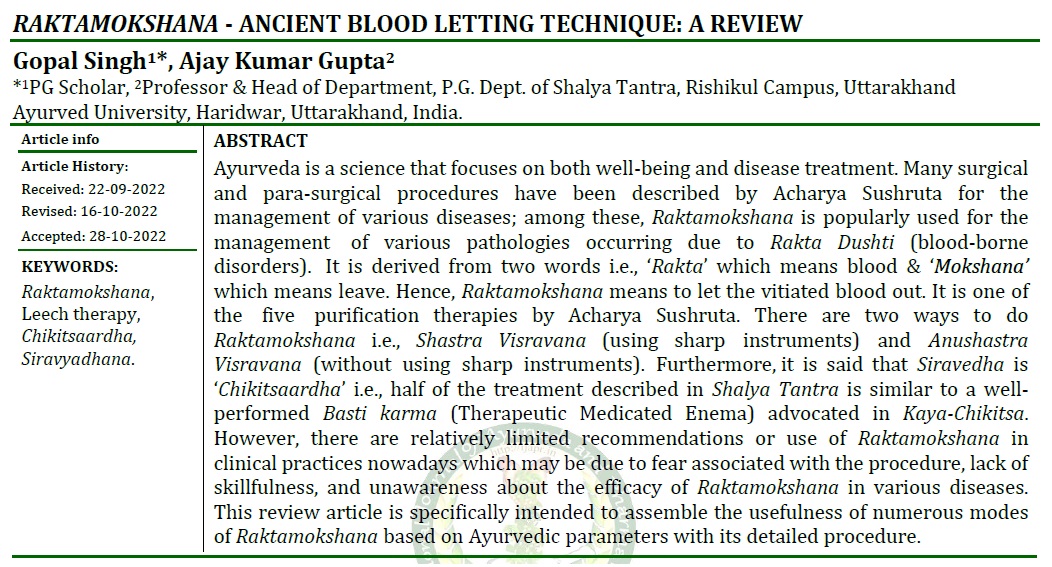Raktamokshana- Ancient Blood Letting Technique: A Review
Abstract
Ayurveda is a science that focuses on both well-being and disease treatment. Many surgical and para-surgical procedures have been described by Acharya Sushruta for the management of various diseases; among these, Raktamokshana is popularly used for the management of various pathologies occurring due to Rakta Dushti (blood-borne disorders). It is derived from two words i.e., ‘Rakta’ which means blood & ‘Mokshana’ which means leave. Hence, Raktamokshana means to let the vitiated blood out. It is one of the five purification therapies by Acharya Sushruta. There are two ways to do Raktamokshana i.e., Shastra Visravana (using sharp instruments) and Anushastra Visravana (without using sharp instruments). Furthermore, it is said that Siravedha is ‘Chikitsaardha’ i.e., half of the treatment described in Shalya Tantra is similar to a well-performed Basti karma (Therapeutic Medicated Enema) advocated in Kaya-Chikitsa. However, there are relatively limited recommendations or use of Raktamokshana in clinical practices nowadays which may be due to fear associated with the procedure, lack of skillfulness, and unawareness about the efficacy of Raktamokshana in various diseases. This review article is specifically intended to assemble the usefulness of numerous modes of Raktamokshana based on Ayurvedic parameters with its detailed procedure
Downloads

Copyright (c) 2022 International Journal of Ayurveda and Pharma Research

This work is licensed under a Creative Commons Attribution-NonCommercial-ShareAlike 4.0 International License.






